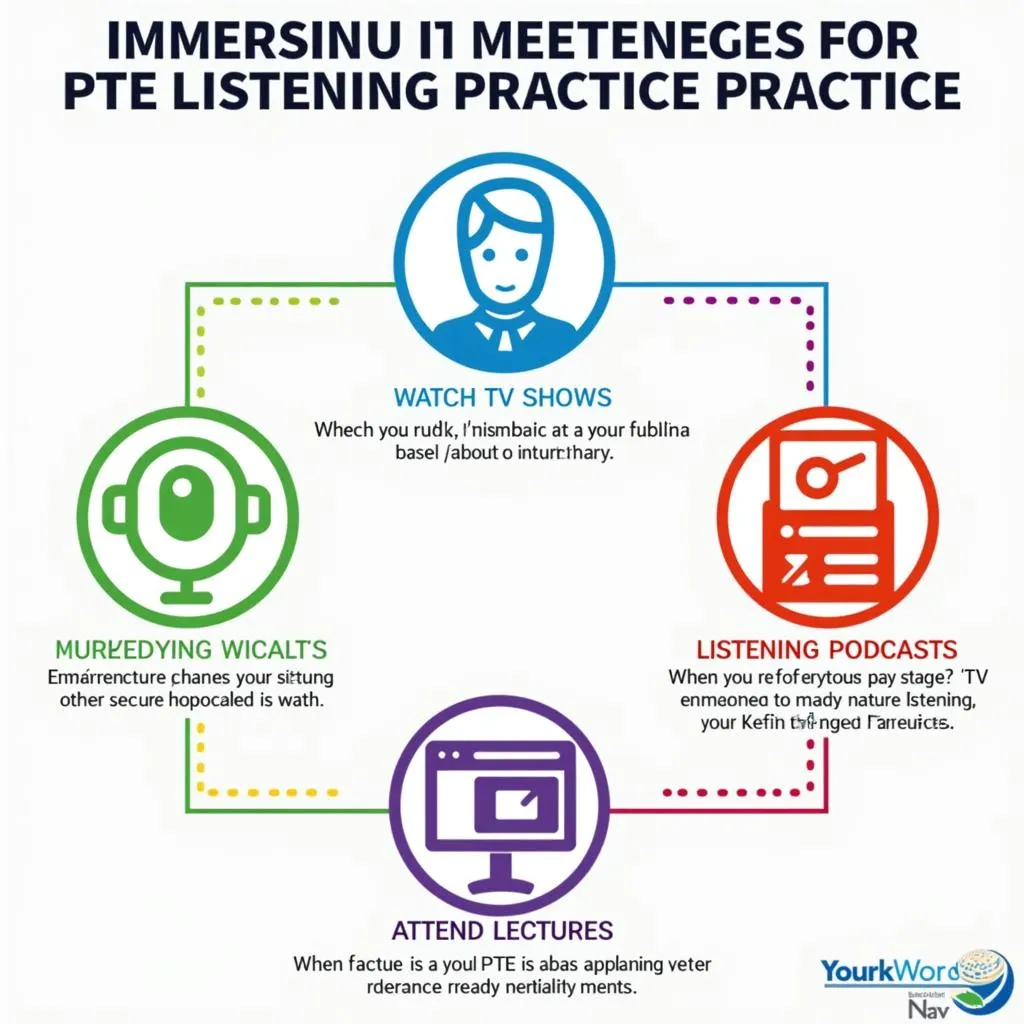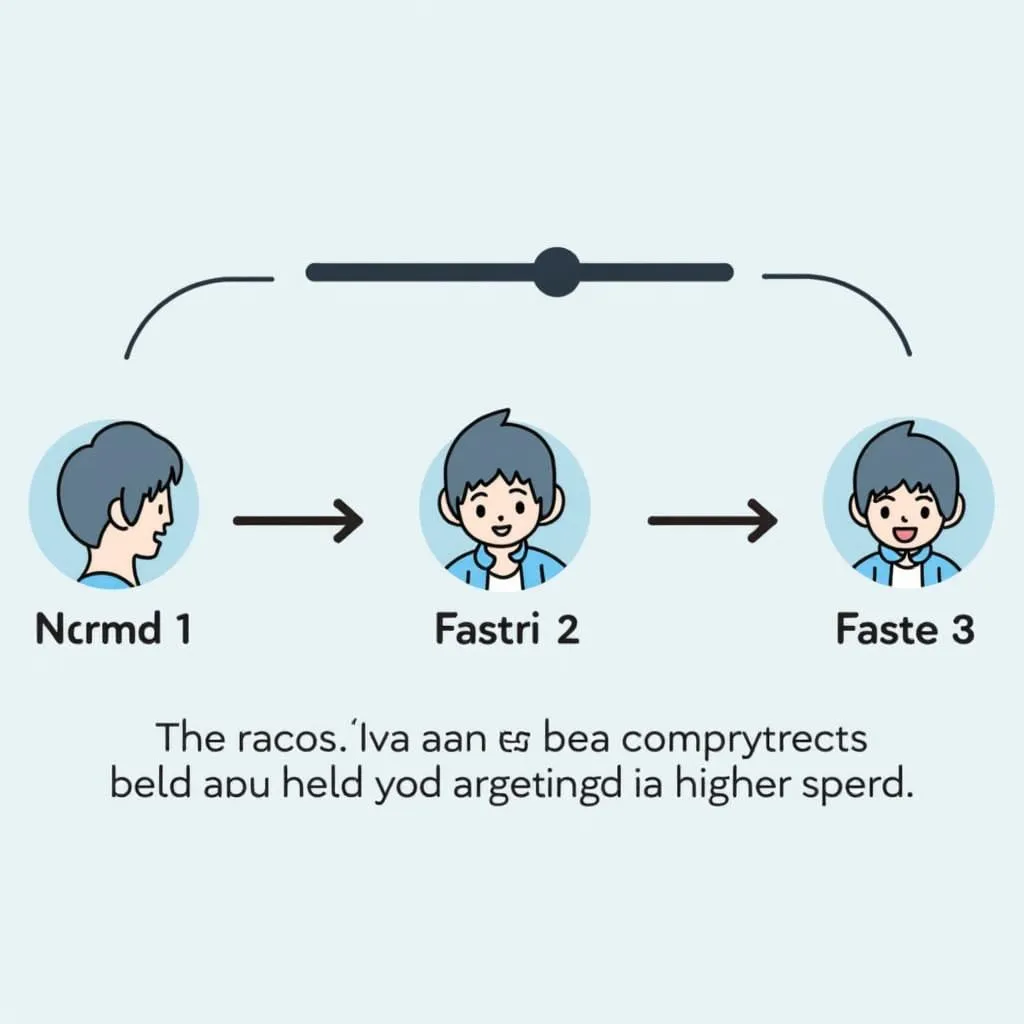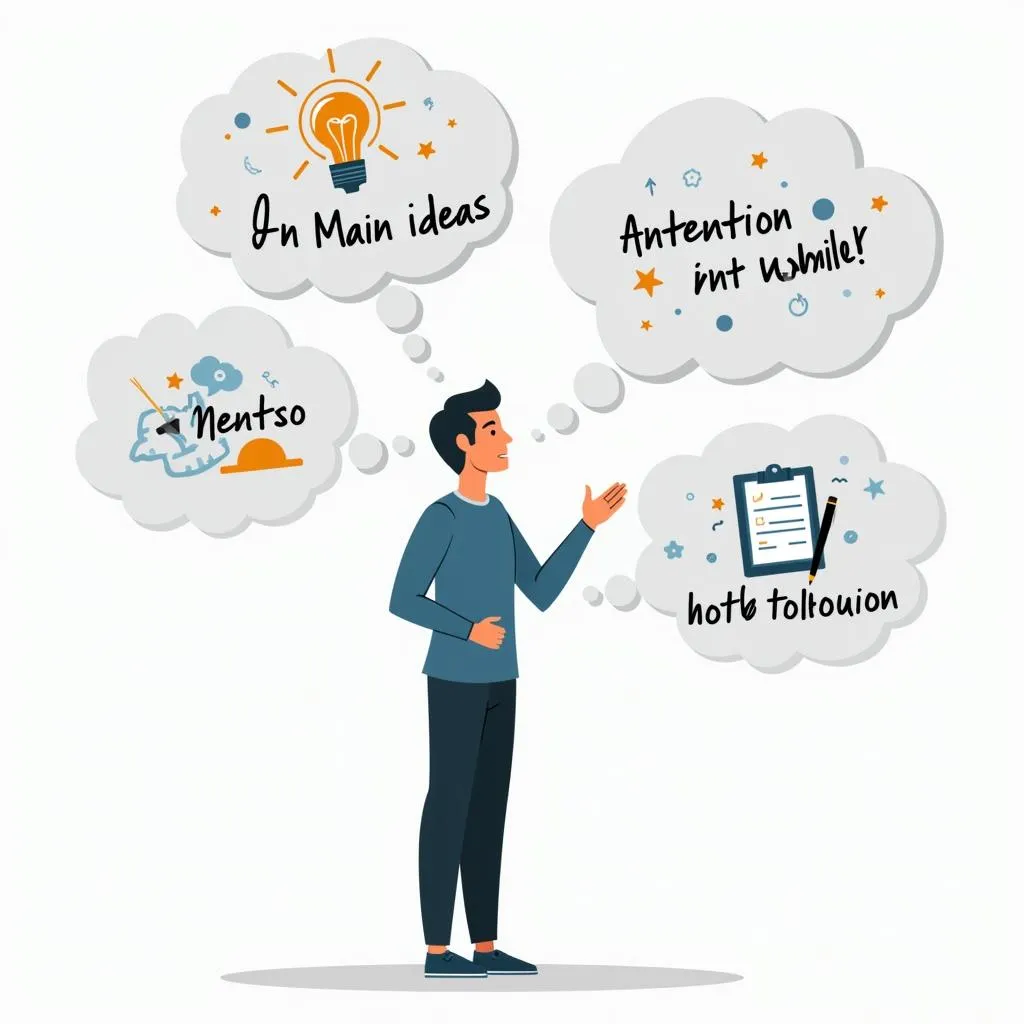Improving your ability to understand fast speech is crucial for success in the PTE Academic test. Many test-takers struggle with this aspect, especially in the listening section. This comprehensive guide will provide you with effective strategies and practical tips on How To Practice Listening To Fast Speech For PTE, helping you boost your confidence and achieve your desired score.
Understanding the Challenge of Fast Speech in PTE
Before diving into the strategies, it’s essential to grasp why fast speech poses such a challenge in the PTE test. The listening section often includes audio clips with native speakers talking at a rapid pace, which can be overwhelming for non-native English learners.
Common Difficulties:
- Missed words or phrases
- Inability to keep up with the speaker’s pace
- Trouble distinguishing between similar sounds
- Difficulty in grasping the overall meaning
Understanding these challenges is the first step towards overcoming them. Now, let’s explore effective methods to enhance your fast speech listening skills for PTE.
Immersion Techniques for Rapid Speech Comprehension
One of the most effective ways to improve your ability to understand fast speech is through immersion. Surrounding yourself with rapid English speech can significantly enhance your listening skills over time.
- Watch English-language TV shows and movies without subtitles
- Listen to English podcasts on various topics
- Engage with native English speakers in conversations
- Attend English language lectures or seminars (online or in-person)
 Immersion techniques for PTE listening practice
Immersion techniques for PTE listening practice
Dr. Emma Thompson, a renowned PTE preparation expert, emphasizes the importance of immersion:
“Consistent exposure to fast-paced, natural English speech is key to developing the neural pathways necessary for rapid comprehension. It’s not just about hearing the words; it’s about training your brain to process them quickly.”
Targeted Listening Exercises for PTE Success
While general immersion is beneficial, targeted exercises specifically designed for PTE can accelerate your progress. Here are some effective techniques:
1. Shadowing
Shadowing involves listening to an audio clip and repeating what you hear immediately, mimicking the speaker’s pace and intonation.
Steps:
- Choose a short audio clip (30 seconds to 1 minute)
- Listen once to familiarize yourself with the content
- Play it again, this time repeating what you hear as quickly as possible
- Focus on matching the speaker’s speed and pronunciation
2. Dictation Practice
Dictation helps improve both listening and writing skills simultaneously.
Process:
- Select an audio clip at a challenging speed
- Listen and try to write down every word you hear
- Compare your transcription with the original text
- Identify missed words or phrases and practice those sections repeatedly
3. Speed Ramping
This technique involves gradually increasing the playback speed of audio materials.
How to do it:
- Start with a comfortable listening speed
- Incrementally increase the playback speed (most media players have this feature)
- Practice until you can comprehend the content at 1.25x or 1.5x speed
- Return to normal speed and notice how much easier it seems
 Speed ramping technique for PTE listening practice
Speed ramping technique for PTE listening practice
Leveraging Technology for Fast Speech Practice
In today’s digital age, numerous tools and apps can aid your fast speech listening practice for PTE.
Recommended Apps and Websites:
-
YouGlish: Allows you to search for specific words or phrases and hear them pronounced in various accents and speeds.
-
TED Talks: Offers a wide range of speeches on diverse topics, with adjustable playback speeds and subtitles.
-
BBC Learning English: Provides news articles with accompanying audio at different speeds.
-
Speechling: Offers personalized feedback on your pronunciation and listening skills.
-
Audible: Audiobooks can be an excellent resource for extended listening practice, with adjustable narration speeds.
Professor John Adams, a digital language learning specialist, notes:
“These technological tools provide a personalized and adaptive learning experience. They allow students to tailor their practice to their specific needs and progress at their own pace, which is crucial for mastering fast speech comprehension.”
Developing Active Listening Skills for PTE
Active listening is a crucial skill for understanding fast speech in the PTE test. It involves fully concentrating, understanding, responding, and then remembering what is being said.
Tips for Active Listening:
- Focus on the main ideas rather than every single word
- Pay attention to stress and intonation patterns
- Anticipate what the speaker might say next
- Practice note-taking to capture key points quickly
 Active listening skills for PTE test preparation
Active listening skills for PTE test preparation
Overcoming Anxiety and Building Confidence
Anxiety can significantly impair your ability to understand fast speech, especially in a test environment. Here are strategies to build confidence and reduce anxiety:
- Regular timed practice: Simulate test conditions to become comfortable with time constraints.
- Positive self-talk: Encourage yourself and maintain a growth mindset.
- Breathing exercises: Practice deep breathing to stay calm during the test.
- Visualization: Imagine yourself successfully completing the listening tasks.
Remember, improvement takes time. Celebrate small victories and stay persistent in your practice.
Conclusion: Mastering Fast Speech Listening for PTE Success
Improving your ability to understand fast speech for the PTE test is a journey that requires dedication and consistent practice. By implementing the strategies outlined in this guide – from immersion techniques and targeted exercises to leveraging technology and developing active listening skills – you can significantly enhance your performance in the PTE listening section.
Remember, the key to success lies in regular practice and a positive attitude. As you continue to expose yourself to fast-paced English speech and apply these techniques, you’ll find your comprehension improving steadily. Stay motivated, track your progress, and don’t hesitate to adjust your study methods as needed.
With persistence and the right approach, you’ll be well-equipped to tackle even the most challenging fast speech sections in the PTE Academic test. Good luck with your preparation, and may your hard work lead you to achieve the PTE score you desire!
FAQ
How long does it typically take to improve fast speech listening skills for PTE?
Improvement timelines vary, but most students see noticeable progress within 4-6 weeks of consistent daily practice. However, significant improvement can take 2-3 months or more, depending on your starting level and practice intensity.
Can watching English movies with subtitles help improve fast speech comprehension?
While it’s better than not watching at all, relying on subtitles can hinder your listening skill development. Start with subtitles if necessary, but gradually transition to watching without them to challenge your listening abilities.
Are there specific accents I should focus on for PTE listening practice?
PTE includes a variety of English accents, but British, American, and Australian accents are most common. It’s beneficial to practice with all three, focusing more on the ones you find most challenging.
How can I measure my progress in understanding fast speech?
Regular self-assessment is key. Try transcribing short audio clips and compare your accuracy over time. Also, note how comfortable you feel with increasingly faster speech rates in your practice materials.
Is it helpful to slow down audio for practice, or should I always use natural speed?
Both approaches have merits. Starting with slowed-down audio can help you catch details, but gradually increase the speed to natural and even faster rates to challenge yourself and improve your real-time processing skills.
What should I do if I completely lose track during a fast speech section in the actual PTE test?
Stay calm and refocus on the next sentence or question. Don’t dwell on missed information. Instead, concentrate on catching key words and main ideas in the remaining content to maximize your score.